
Sensor Size
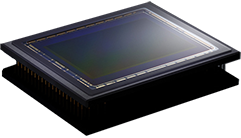

Airy disk smaller than pixel
No loss of detail.

Airy disk larger than pixel
Loss of detail.
A larger sensor requires a lens to focus light onto a larger area after passing through the lens. This means that the lenses for SLR cameras are also larger. This further increases the impact of sensor size on the overall camera size. In most compact cameras, when the camera is turned on, the lens moves out of the camera and is ready for use. When the camera is turned off, the lens mechanism retracts small enough to fit inside the camera. In fact, there is no moving mechanism in cell phones. A very small lens is sufficient for a cell phone sensor.

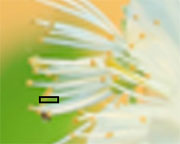
In summary, larger sensors:
On bright sunny days, the difference between photos taken by different cameras may be relatively small. However, as the day starts to darken, or if we're indoors without a tripod, or if the subject we're photographing is in motion, we can't use a tripod, even if we have one. In such situations, using flash indoors might be an alternative, but it won't work outdoors. In these cases, to capture photos without blur, our last resort is to open the lens to its maximum aperture (maximizing the amount of light the lens can take in per unit time) and increase the camera's ISO value. In digital cameras, ISO is similar to ASA in film cameras. Essentially, as the ISO value increases, the sensitivity of pixels to light increases. This allows us to achieve the same exposure at lower shutter speeds (shorter time). However, increasing the sensitivity of pixels to light introduces noise, which is called grain in film photography. The ISO 100 and 12,800 examples below show photos taken at two different ISO values. The photo taken at ISO 100 was taken with a 1-second exposure with a tripod, so there was no shaking. However, this photo could not be taken without shaking hand-held at a 1-second exposure. To capture this photo without shaking, the ISO value was increased to 12,800, resulting in a shutter speed of 1/100 sec, which is quite suitable for hand-held shooting. However, as can be seen below, there is a significant loss of quality in this photo. In cameras with larger sensors, as you increase the ISO, the loss of quality is significantly less.

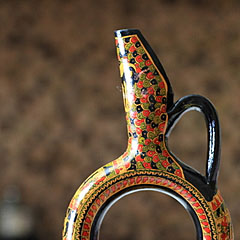
Depth of field is the distance between the nearest and farthest points in focus in a photograph. Depth of field is primarily controlled by the aperture value, but sensor size is also an important factor. To reduce depth of field, the aperture should be widened, and this is achieved by selecting the maximum f-stop value of the lens. In fact, since the f-stop value is expressed as 1/(a division), a smaller number indicates a larger aperture. In the example below, photos were taken with aperture values of f/16 and f/1.4, respectively. As you can see, the photo taken at f/1.4 emphasizes the subject in the foreground, blurring the background. This helps direct the viewer's attention more easily to the subject. Having a shallow depth of field is also desired in portrait photography, where the subject is made much clearer in the photo. However, a shallow depth of field is undesirable in landscape photos, where both nearby rocks and distant mountains need to be in focus. So, what's the relationship between sensor size and depth of field? Why can't compact cameras with lenses like f/2.8 achieve this effect? The reason lies in sensor size and, consequently, the focal length multiplier. For example, let's compare a camera with an APS-C sensor like the Canon 7D (sensor size = 22.2 x 14.8 mm) to the Canon EOS 5D Mark II, which has a full-frame sensor (sensor size = 36 x 24 mm). To capture the same frame with a 50mm lens on the 7D and an 80mm lens on the 5D Mark II, the APS-C sensor is 1.6 times smaller than the full-frame sensor. This ratio is called the focal length multiplier. The focal length multiplier multiplied by the lens's focal length gives the 35mm equivalent focal length of the photo. The 35mm equivalent focal length has become a worldwide standard and is a universal measure for describing focal length. Simply put, focal length tells us how far away the square captured in the frame is. Values like 16 and 18 represent very wide angles, while values like 400 and 500mm represent very narrow telephoto angles. Expressions like 24-105mm on zoom lenses indicate that the lens's widest angle is 24mm, and its narrowest angle is 105mm, providing 5X optical zoom from 105/24. Returning to the relationship between sensor size and depth of field, we mentioned that the 7D requires a 50mm lens for the same frame as the 5D Mark II, which needs an 80mm lens. When the focal length increases at the same aperture value, the depth of field decreases. That's why the full-frame 5D Mark II provides a shallower depth of field.
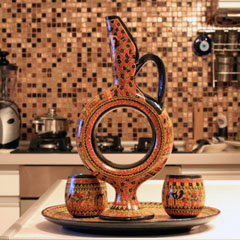
The object is mixed with the background.
The viewer's attention is scattered.

The background is blurred,
and the viewer's attention can focus on the object.
The term "dynamic range," also known as "dynamic range," refers to the contrast difference between the unblown brightest area and the darkest area from which details can be selected in a photograph. The human eye can provide multiple times more dynamic range than even the highest-quality and most expensive sensors. There is a direct relationship between sensor size (pixel area) and dynamic range in photography. When we take a photo with very dark and very bright areas, if we expose the camera to the dark area, the dark areas will be properly exposed, but the bright areas in the frame will completely blow out and become completely white. (See the bottom-middle photo) In this case, information is completely lost. Similarly, if exposed to the bright area, the dark areas will become completely pitch black, and the information will be lost again. (See the bottom-left photo) To solve this problem, the HDR (High Dynamic Range) photography technique, which you may have heard frequently, has been developed. According to this technique, a photo is taken with three different exposure values: one for the darkest area, one for the brightest area, and one for a normal area, and then the best-exposed parts of the photos are combined for use. (See the bottom-right photo) Various software can be used for this merging process. While this technique allows for an increase in dynamic range, it is not always possible to take three exposures. Therefore, the high dynamic range of a single-shot photo is still an important factor in the quality of the photo.



and bright areas do not blow out.
Interchangeable Lenses
Perhaps one of the most well-known features of SLR cameras is that their lenses are interchangeable. However, SLR (Single Lens Reflex) does not just mean interchangeable lens cameras. It means that the image we see through the viewfinder is the same image that falls onto the sensor when the photo is taken, passing through a single lens and the same optical path. I will try to explain this in more detail in the next section, Optical Viewfinder. So what does it mean for lenses to be interchangeable? Does a compact camera with a single fixed lens not suffice? In fact, it depends entirely on the type of photography you intend to pursue. However, the capabilities of lenses prepared for specific purposes cannot be matched by a single, general-purpose lens. The more general-purpose a lens is, the less successful it is in extreme situations specific to the type of photography. Photographers attach lenses appropriate for their chosen type of photography. There are many lenses that serve for a wide range of purposes and styles.
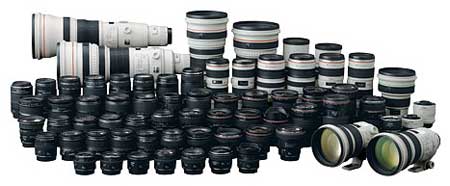
While lenses can be categorized based on many features, one of their fundamental features is whether their focal lengths are interchangeable. Those that can change focal length are called "zoom" lenses, while those with a fixed focal length are called "prime" lenses. In zoom lenses, you may encounter expressions like 18-135 on the lens, indicating that the lens has a wide-angle focal length of 18mm and a telephoto focal length of 135mm, meaning that the focal length can be changed, in other words, it can be zoomed (135/28 ≈ 5X optical zoom). This feature is already found in most compact camera lenses. Prime lenses, on the other hand, have a fixed focal length (cannot zoom). While the usage of prime lenses is more limited, they are used for very specific professional purposes and deliver very high-quality results. So, what kind of photos are these various lenses seen above used for? Here are some examples:
- Wildlife Photography: Telephoto lenses with a narrow angle, capable of zooming, large aperture, very expensive, large, and heavy lenses since you cannot approach wild animals closely. An example can be seen in the photo on the right.
- Sports Photography: Similar to wildlife photography, telephoto lenses with a narrow angle, a large aperture, and highly-priced (over $6000) lenses used by photographers on the sidelines of football and basketball matches.
- Portrait Photography: Lenses with focal lengths between 50mm and 100mm (35mm equivalent), with a minimum depth of field, and large apertures like f/1.2, f/1.4, f/1.8, used for bringing the subject to the forefront.
- Landscape Photography: Wide-angle lenses with focal lengths below 24mm (35mm equivalent) that do not require a very large aperture.
- Travel Photography: General-purpose lenses with focal lengths ranging from 28mm to 140mm (35mm equivalent) that do not require frequent lens changes and are not too heavy.
- Macro Photography: Lenses that can capture tiny objects such as flowers, insects, and fine details from a very close distance, allowing for precise focusing at distances as close as 3-4 cm.
- Architectural Photography: Tilt-shift special-purpose lenses that correct perspective errors in regular lenses when capturing architectural structures and buildings.
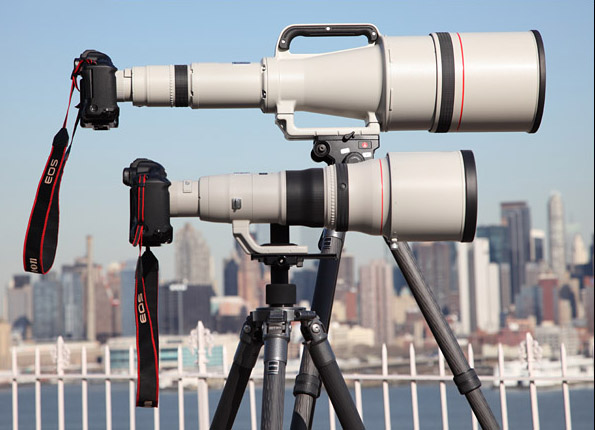
Optical Viewfinder
To take a photograph, we need a viewfinder to decide on the image we are going to capture before pressing the shutter release button. Modern cameras use different technologies for viewfinders. Electronic viewfinders are viewfinders where the image is delivered to the camera's LCD screen behind the camera after it reaches the sensor and is digitally converted. However, in SLR cameras, the viewfinders we look through a small window by resting our eye are optical viewfinders. Some hybrid models even have a small LCD screen inside this small window, and the image is digitally created, and these are also referred to as electronic viewfinders. In optical viewfinders, the image reaches our eyes directly by passing through the lens and is reflected into our eyes through an optical path involving prisms. The diagram below describes the path of light to the optical viewfinder. According to this, after the light passes through the lens, it hits a mirror at a 45-degree angle shown in blue, which directs the light to the prism shown in light blue on top of the camera. From there, it is reflected into our eyes. When we press the shutter release button to take the photo, the image in the optical viewfinder disappears because the mirror folds upward at that moment, ensuring that the image reaches the sensor directly instead of the prism. This allows the image on the sensor to be digitally converted and saved to the memory card. The path of light at the moment of taking the photo is shown in yellow. However, almost all modern SLR cameras also have an electronic viewfinder. An electronic viewfinder is useful when we need to position the camera above or below our eye level, i.e., when we cannot use the optical viewfinder. Foldable and rotatable LCD screens further enhance this benefit.
While lenses can be categorized based on many features, one of their fundamental features is whether their focal lengths are interchangeable. Those that can change focal length are called "zoom" lenses, while those with a fixed focal length are called "prime" lenses. In zoom lenses, you may encounter expressions like 18-135 on the lens, indicating that the lens has a wide-angle focal length of 18mm and a telephoto focal length of 135mm, meaning that the focal length can be changed, in other words, it can be zoomed (135/28 ≈ 5X optical zoom). This feature is already found in most compact camera lenses. Prime lenses, on the other hand, have a fixed focal length (cannot zoom). While the usage of prime lenses is more limited, they are used for very specific professional purposes and deliver very high-quality results. So, what kind of photos are these various lenses seen above used for? Here are some examples:
- Since the image reaches our eyes optically, there is no delay in seeing the image. In electronic viewfinders, there is a delay because we see the digitally processed image from the sensor.
- Optical viewfinders have no resolution limit for the image we see. We see all the details our eyes can perceive directly through the viewfinder. In electronic viewfinders, the resolution of the LCD screen can be limiting.
- Optical viewfinders do not consume power electronically, so they do not drain the battery life.
- Looking at LCD screens in electronic viewfinders may not be possible in bright daylight, and the screen can appear dark. Optical viewfinders can be used in all conditions.
- Using the LCD screen requires the camera to be positioned farther away, which can introduce vibrations.
- Optical viewfinders provide better attention and focus when taking a photo because only the frame to be captured can be seen in the optical viewfinder, enhancing concentration.

Operation Speed
The processors used in SLR cameras are much faster than those in compact cameras. There are exceptions, of course, but generally, the processors in SLR cameras are fast. In fact, some recent SLR cameras have dual processors. So, what does having fast processors do? When we bring the camera from the off position to the on position, it takes milliseconds for the camera to become ready to take a photo. This becomes crucial when you need to capture a moment quickly. As someone who has been frustrated by this in older cameras, this is an important aspect for me. Another advantage is that these cameras can take multiple photos in rapid succession when set to continuous mode. For example, the EOS-1D X camera can capture 14 frames per second, which is a significant advantage, especially in photography genres where speed is essential, such as bird and sports photography. Most bird photographers select their best shots by choosing from dozens of photos taken within 2-3 seconds.

